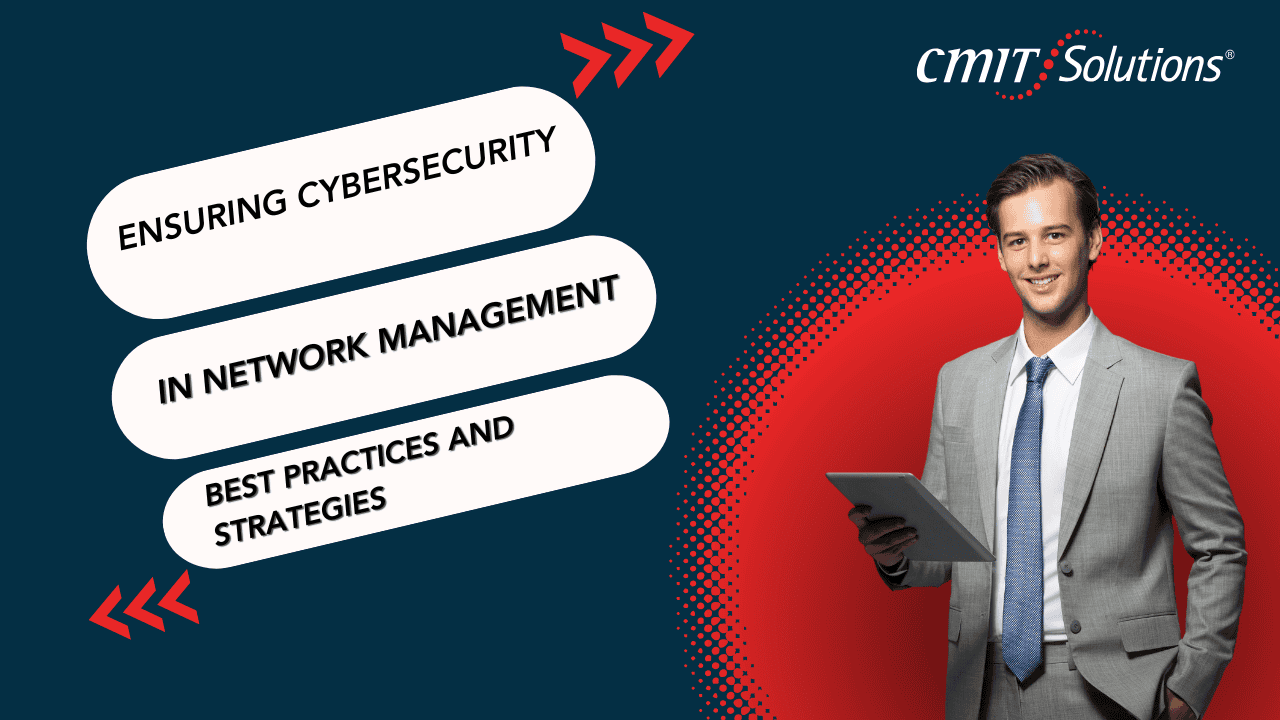Introduction
In today’s interconnected world, maintaining robust cybersecurity in network management is essential for protecting organizational assets, sensitive data, and client trust. As cyber threats grow in complexity, businesses in Boston, Newton, and Waltham need proactive strategies to defend against them. This blog explores the best practices and advanced tools for securing network management, emphasizing the importance of continuous monitoring and proactive threat mitigation. At CMIT Solutions, we’re committed to helping organizations stay ahead of emerging threats with tailored cybersecurity solutions.
Understanding the Importance of Cybersecurity in Network Management
Network security is the backbone of an organization’s IT infrastructure, crucial for defending against unauthorized access, data breaches, and other malicious activities. A compromised network can lead to severe consequences, from financial loss to reputational damage. With the right network management practices, businesses can safeguard their operations and boost productivity across departments. Effective network security fosters a resilient IT environment, essential for maintaining continuous business operations and customer trust.
Best Practices for Network Security
1. Implement Strong Access Controls
User Authentication: Multi-factor authentication (MFA) is essential to prevent unauthorized access to network resources. By requiring two or more forms of verification, MFA helps secure user access and adds an extra layer of protection.
Role-Based Access Control (RBAC): Assigning permissions based on user roles limits access to sensitive data, reducing the risk of insider threats. This approach is beneficial in highly regulated sectors such as healthcare and finance.
2. Regularly Update and Patch Systems
Patch Management: Keeping network devices and software updated with the latest patches is vital to protecting against vulnerabilities. Automated patching helps ensure timely application of critical updates across your infrastructure.
Automated Updates: Where feasible, enable automatic updates for systems and applications to reduce manual maintenance and improve security.
3. Encrypt Data in Transit and at Rest
Encryption Protocols: Encryption ensures that sensitive data remains secure, whether stored or transmitted across the network. Strong encryption standards protect against unauthorized access, especially in cloud environments.
4. Implement Network Segmentation
Segregate Networks: Using VLANs or subnets helps isolate different types of network traffic, which limits the spread of breaches and enhances security. For example, implementing network segmentation in a retail setting protects sensitive customer data from other parts of the network.
Firewall Rules: Configuring firewalls to enforce segmentation controls traffic between network segments and prevents unauthorized access.
5. Conduct Regular Security Assessments
Vulnerability Scanning: Routine scanning helps identify and address security weaknesses, keeping systems resilient against potential attacks.
Penetration Testing: Simulating attacks assesses network defenses, revealing gaps and providing insights for enhancing security measures.
Leveraging Advanced Tools and Technologies
1. Intrusion Detection and Prevention Systems (IDPS)
Real-Time Monitoring: IDPS tools monitor network traffic for suspicious activity and respond to potential threats automatically. This proactive monitoring is essential for organizations facing continuous cybersecurity threats.
Anomaly Detection: Behavior-based detection tools identify unusual patterns, flagging potential security incidents.
2. Security Information and Event Management (SIEM)
Centralized Logging: SIEM solutions consolidate logs from multiple sources, enabling comprehensive insights into network activity.
Incident Response: Rapid identification and response to security incidents help protect sensitive data, ensuring compliance and reducing risk.
3. Next-Generation Firewalls (NGFW)
Advanced Threat Protection: NGFWs offer robust features like application awareness and intrusion prevention, providing essential security for complex networks.
Deep Packet Inspection: Analyzing traffic at a granular level enables NGFWs to detect and block sophisticated threats, safeguarding network resources.
4. Artificial Intelligence and Machine Learning
Threat Intelligence: AI and ML analyze large data volumes, identifying patterns and predicting potential threats before they escalate. This capability is invaluable for companies aiming to enhance data-driven decision-making.
Automated Response: AI-driven tools automate threat detection and response, reducing incident mitigation times and enhancing network resilience.
The Importance of Continuous Monitoring and Proactive Threat Mitigation
Continuous Network Monitoring
Real-Time Visibility: Continuous monitoring provides a real-time view of network activities, enabling quick identification of anomalies and threats. This visibility helps ensure network stability for remote collaboration tools.
Alert Systems: Automated alert systems notify administrators of potential issues, facilitating prompt responses to minimize damage.
Proactive Threat Mitigation
Threat Intelligence Feeds: Staying informed about emerging threats through threat intelligence feeds allows businesses to take proactive steps to protect their networks.
Incident Response Plans: Having a well-defined incident response plan is essential for minimizing downtime and data loss. Regular updates to these plans improve preparedness for various cyber threats.
Employee Training and Awareness
Cybersecurity Training: Regular training sessions keep employees informed about cybersecurity best practices and enhance phishing prevention efforts.
Regular Drills: Conducting security drills familiarizes employees with response procedures, improving overall incident management and resilience.
Conclusion
Ensuring cybersecurity in network management requires a comprehensive approach that combines best practices, advanced tools, and vigilant monitoring. By implementing robust access controls, encrypting data, and leveraging cutting-edge technologies like AI and NGFWs, businesses can strengthen their network security posture and protect their assets. Continuous monitoring and proactive threat mitigation are essential for staying ahead of evolving cyber threats.
Partnering with CMIT Solutions provides businesses with expert guidance and tailored solutions to meet their cybersecurity needs. With our proactive approach, CMIT can help you build a resilient network security strategy that safeguards your organization’s valuable data and supports your growth in a dynamic digital world.





